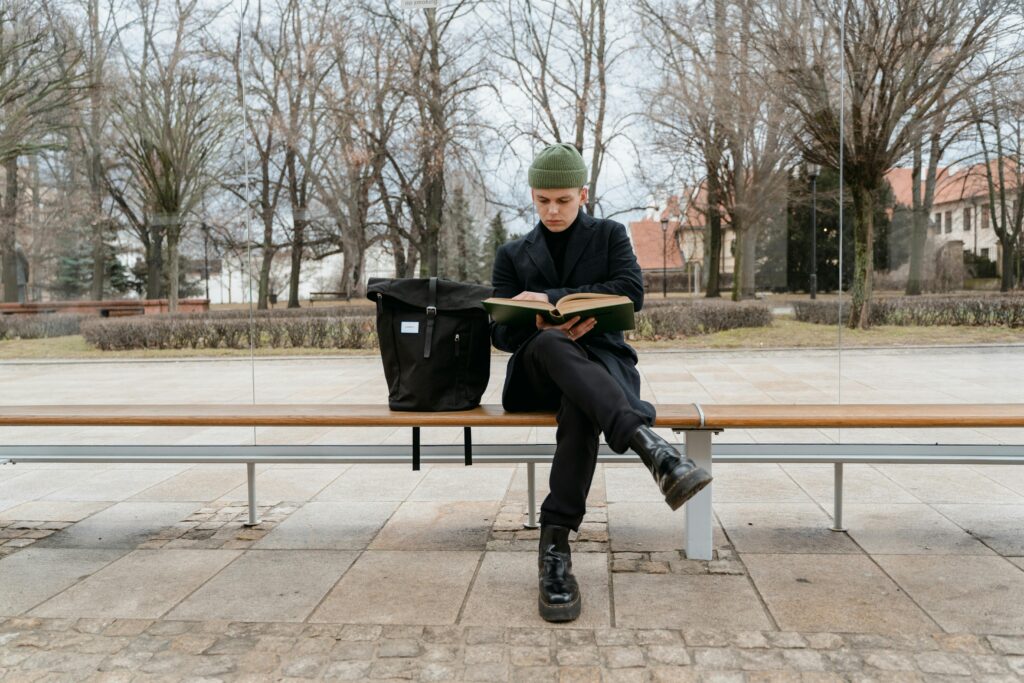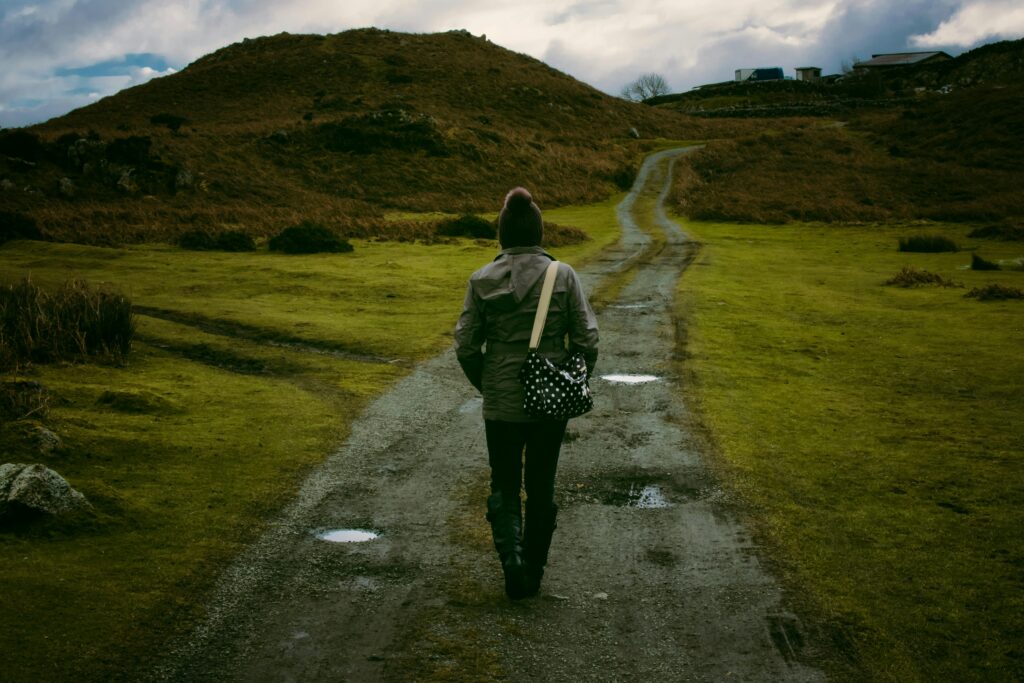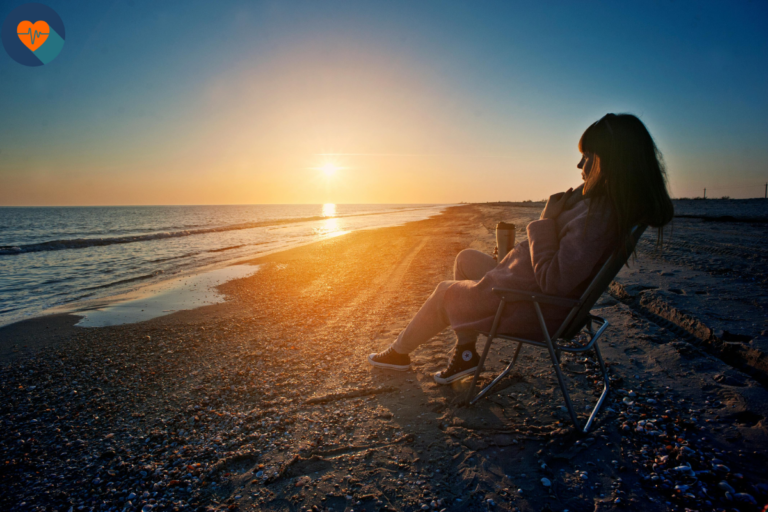Table of Contents
Finding peace alone is more important than ever in today’s world. It’s a journey toward self-discovery and growth. This guide will show you how to find peace in your alone time.
Key Takeaways
- Understand the distinction between solitude and loneliness, and the psychological benefits of volitional solitude.
- How to create a peaceful and calming environment for reflection and personal growth.
- Mindfulness activities and solo experiences that will facilitate your journey with self-exploration.
- Discover the role that nature plays in creating lone peace and how you may introduce it into your life.
- Plan how to achieve a balance between social life and solitude for yourself.
Understanding the Difference Between Solitude and Loneliness

Solitude and loneliness are not the same thing. Solitude is choosing to be alone, which gives you a break from social demands. Loneliness is feeling isolated and wanting a connection. Knowing the difference helps us see the mental health perks of being alone.
Differentiating between self-selected isolation and forced solitude
Choosing solitude is a powerful choice in being alone and growing because it makes one relax and think deeply, learning many things about oneself. However, unwanted isolation can hurt both your feelings and how other people see you.
Mental Effects of Voluntary Isolation
Being alone can really help your mind. Stress decreases, and it increases focus with stimulated creativity. It’s that cool time to reflect on oneself.
Breaking the Stigma Around Being Alone
In today’s world, being alone is often seen as odd or sad. But, it’s important to see the value in being by yourself. Being alone can be refreshing and a chance to discover yourself.
The Science Behind Finding Peace in Solitude

Neuroscience and psychology have discovered the deep profits of solitude. Many studies have shown that spending time alone can significantly increase your well-being, decrease stress, boost brainpower, and help you take control of your emotions.
Being away from constant social noise lets your brain rest and recharge. This quiet time can lower levels of cortisol, the principal stress hormone, helping you feel calm and relaxed.
It also helps your brain think deeply. According to research, it may improve your memory and your problem-solving skills. Your mind gets a break from talking and thinking about others constantly.
Being alone also enhances your emotional health. It helps you know yourself better. This results in better emotional control and a stronger sense of self.
Adding alone time to your life has long-lasting effects. People who value solitude generally have more life satisfaction. They are happier and stronger, ready to take on life’s challenges.
The science behind finding peace in solitude shows the value of self-reflection. It calls for the need for space for personal growth. By embracing solitude, you can lead a more balanced and fulfilling life.
Creating Your Dream Solitary Haven in Home
An oasis in your living space is life-changing. You create a personal sanctuary in your home by cultivating a space that fosters self-discovery; it becomes a place for inner reflection.
Design a Peaceful Reflection Space
To make a retreat, think about what you like and need. Pick a spot in your home that is secluded. It should be a place you retreat to relax without disturbance.
The Basics of a Calming Environment
To create a peaceful haven, emphasize things that calm you. This includes:
- Soft, natural light from candles or dimmable lamps.
- Plush armchair or floor pillow for comfortable seating
- Soothing scents of incense or essential oils
- Soft background music or natural sounds
Incorporating Mindful Décor and Natural Elements
Add some mindful décor and natural elements to make your sanctuary more peaceful. Try these:
- Plants or fresh flowers to bring nature inside
- Artwork or wall hangings that inspire thought
- Tactile objects like smooth stones or organic fabrics
- Calming colors and textures that promote peace
By creating a sanctuary that fits your needs, you are actually deepening the connection with yourself. Find calmness, clarity, and fulfillment in your personal retreat.
Mindfulness Exercises for When You’re Alone
It’s a chance to grow in mindfulness and awareness. You will find peace and be able to develop in the here and now with the different mindfulness practices.
Begin with meditation. Find a quiet place and get comfortable. Gently close your eyes and concentrate on your breathing.. When the mind wanders, bring it back to your breath and let go of concern.
Add body scan to your practice, making sure to bring awareness to each part of the body, sensing any tension present. This can promote profound relaxation and heightened self-awareness.
- Try walking meditations to notice your steps and body sensations.
- Embark on guided visualizations to an oasis of serenity within your mind.
- Use mantra repetition to hook into the present moment with a simple phrase. End.
The following mindfulness practices will take you closer to yourself and, therefore, to the world. Embark on this journey of self-discovery and partake in the power of being present.
Embracing Self-Discovery Through Solitary Activities
Alone, you can really get to know yourself. Doing things alone can really help you reflect and be creative. Here are great ways to find yourself during your solo time.
Journaling and Self-Reflection Techniques
Writing in a journal can change you.It allows you to express your thoughts and emotions. Try different ways of journaling to learn more about yourself.
Creative Expression in Solitude
It’s perfect alone for creative hobbies: painting, writing poetry, or learning music. It is, in a sense, an opportunity to express freely without worrying about what others think.
Personal Development Projects
- Set goals for yourself during your alone time. This could be learning something new or practicing mindfulness.
- Do things that make you reflect on yourself, like creating a vision board. It helps you discover what you truly value.
- Read books or online courses related to things like emotional intelligence or money management. It’s certainly a path to personal growth.
You may discover a lot about yourself by doing things on your own, and it can light the fuse of creativity and begin a process of self-improvement. Use your alone time to get closer to yourself and reach your full potential.
Digital Detox: Deepening Your Solitude Experience
We are all connected to our devices 24/7 nowadays, which can make us feel overwhelmed at times. Taking a technology break helps us find peace and discover ourselves.
Being screen-free allows us to focus on the now. We can journal, meditate, or simply enjoy the quiet without having to check our phones constantly.
It also helps to practice digital minimalism, which basically means using less technology. Then we are not as affected by the web and grow and think more deeply.
Not using technology, also makes us feel better physically. We sleep better and our eyes don’t hurt anymore, plus our body clock gets back to synchronization. Then we would feel even more alive and awake when alone.
- Choose times or days to stay off tech.
- Try screen-free activities, like reading or making art.
- Cut down on your use of futile digital stuff and social media.
- Use your free time to think deeply and to connect with yourself.
With digital detox, we get closer to ourselves. We feel better and find out new things about us. Solitude becomes a powerful tool for growth.
Nature’s Role in Solitary Peace
Venturing out into the great outdoors can change you, especially if you seek peace alone. Nature heals and calms. Whether it is a quiet forest or a great wilderness, nature has the best setting for your journey.
Solo Walking Meditation Practices

You can find peace walking alone in nature. In order to walk in a way that allows one to calm down, it is best done slowly and with proper breathing. Pay attention to your surroundings—what you see, what you hear, and the smells. That keeps you in the present and lets go of worries.
Finding Serenity in Natural Settings
Nature has silent landscapes that will really improve your well-being. The soft trees and the sound of water soothe your mind. Spending time with nature makes one appreciate it more and nourishes the soul.
Outdoor Activities for Peaceful Solitude Ends
- Long-distance hiking in isolated, backcountry regions
- Doing yoga or tai chi in a quiet outdoor environment
- Journaling amid nature’s splendor
- Birdwatching or wildlife watching in a serene natural environment
- Camping out under the stars for that complete alone experience.
Nature could make your alone time more meaningful and calm. Try solo walking, feel the serenity of nature, or do things that bring you closer to nature. Nature can be a strong guide on your way to peace and self-discovery.
Balancing Social Life with Solitary Time
Finding the right balance between being social and having alone time is very important in healthy living. You could either be an introvert or an extrovert but meeting in the middle is utterly necessary, which will keep you happy and well-rounded.
Talk to your friends and family about needing alone time. Set clear boundaries and expectations. Let them know it’s not because you don’t value them, but it’s for your growth and mental health. Being open helps avoid misunderstandings and strengthens your bonds.
It’s perfectly fine to say no when you’re feeling busy.. Put your own care and time alone first. Remember, healthy relationships respect each other’s needs and boundaries.
FAQ
What is the difference between isolation and loneliness?
Solitude: It’s when you decide to be alone to develop yourself—and you get peace of mind. On the other hand, loneliness is not wanted; it makes a person feel isolated. Solitude is positive and loneliness is negative.
How can solitude benefit my mental health?
This can reduce stress and clear up your mind. It also helps to keep your emotions under control. Being alone can make you more self-aware, creative, and calm.
How do I set up a peaceful environment for solitude at home?
Soothing colors and comfortable furniture—a calm space. Add plants or light from nature. Choose mindful decor and remove distractions for a serene feel.
What are some mindfulness practices I can do in my solitude?
Try meditation, mindful breathing, and being present. This all deepens peace, so it facilitates and leads to self-discovery; it helps a person calm down and concentrate.
How can I use solitary time to indulge in personal growth and self-exploration?
Use journaling, creative projects, and personal development to find yourself. These things help you reflect on your thoughts and goals. They deepen your self-understanding.
Why is the need to disconnect from technology within solitary time?
Switching off your gadgets makes your alone time even better. It makes you concentrate on yourself and your surroundings more intently. A digital detox reduces distractions and improves your relationship with nature.
How does spending time in nature help my solace?
Nature activities, such as walking meditation, can bring about calm. Solitude in nature soothes your mind and nourishes your soul. It makes solitude more peaceful.
How would you strike a balance between socialization and wanting to be alone?
Social life must be counterbalanced with time alone; let your loved ones know you need some time to yourself. Set bounds and find ways to meet both your social and personal needs.
For more insights and resources on this topic, be sure to visit our Mental Health section.

